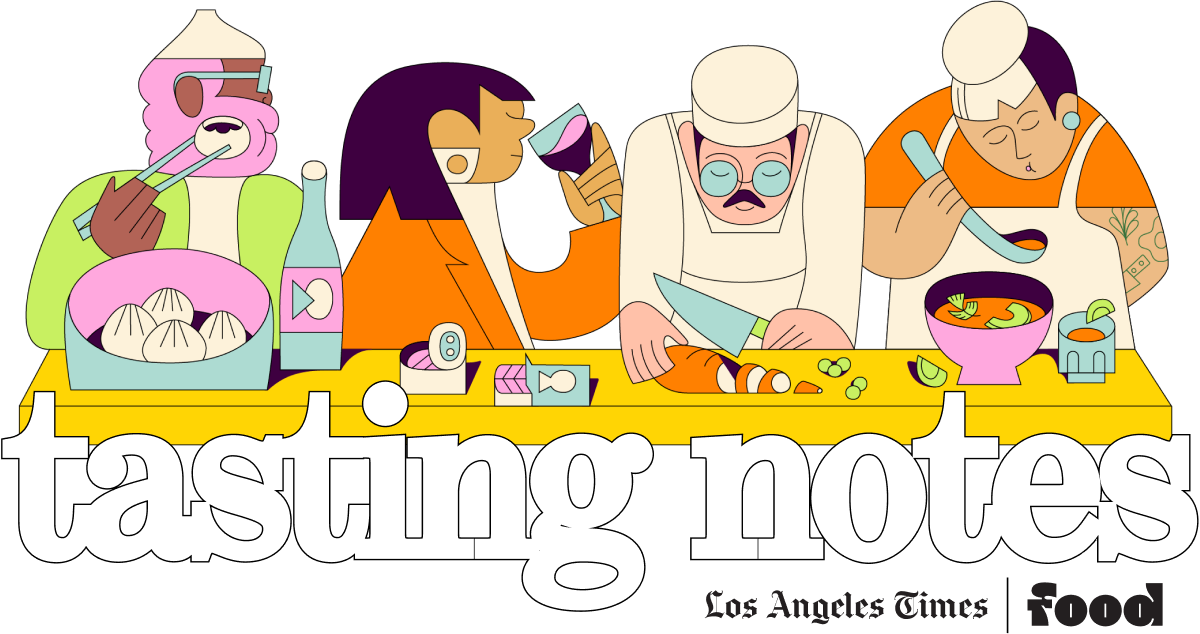In Los Angeles, fall for me means researching, eating and writing at the fastest possible pace to pull together our annual 101 Best Restaurants in L.A. project. But it’s also the season for an almost genetic hunger: I have to return to Maryland, where I was raised, to eat my fill of steamed crabs.
The origins of an obsession
I don’t remember learning how to pick apart a blue crab, in the same way I don’t remember being taught how to speak. My hands dismantling delicious, spice-caked creatures was simply part of family life near the Chesapeake Bay and its estuaries.
As a kid, I took as gospel the local folklore that crabs were best in months spelled with no R and that oysters were at their finest in months with Rs. There were practicalities behind this common belief: Levels of Red Tide can be high during summer, and sharing a few dozen steamed crabs over newspaper with butter-smeared Silver Queen corn on the cob and beer (for the grown-ups) is a warm-weather pastime in our region.
As an unusually food-focused adult, I eventually understood that fall is actually peak crab season. When the waters begin to cool, the swimmers biologically prepare for hibernation, and their meat is at its fullest and sweetest. If you have been eating crabs all your life, it’s plain to see — and taste — the difference in heft. Autumn is also when you’re most likely to get crabs caught in local waters: Over the last half-century, the rise in demand for crabs in the summer has meant businesses buy crabs or shelled crab meat from North Carolina, Texas and Louisiana and as far away as Venezuela and Indonesia.
Sometimes when I come home, we go to a Baltimore-area crab house like Schultz’s, and whenever I’m eating in restaurants I’m ordering crab cakes; the recipes never taste quite the same outside the state. But my internal timer ticks, waiting for the family gathering when my mother splurges on jumbo steamed crabs (which these days cost $135 per dozen and upward) from a carry-out source that we trust buys from Maryland watermen.
As with any regional food imbued with a personal sense of ownership, everyone has big opinions on everything. Most restaurants or carry-out operations that steam crabs use commercial spice blends that are similar to McCormick’s ubiquitous and beloved Old Bay. But the variations are infinite.
More celery seed and less sweet paprika? Aggressive or moderate use of salt? Mom doesn’t like crab spices so salty that they sting your lips and bulldoze over the crab’s sweetness. I don’t mind a more forceful thwack but also appreciate the purity of flavor. My brother usually brings the Natty Boh.
This year as we sat at the kitchen table, covered in butcher paper, where I once muddled through my high school homework, we all agreed the crabs were spectacular: weighted down with snowy flesh, complexly sweet-savory. The corn from a local grower was almost milky. I wiped the wet grit of spices off my hands as best I could and took my once-a-year shot of a crab claw I’d carved out as meticulously as possible.
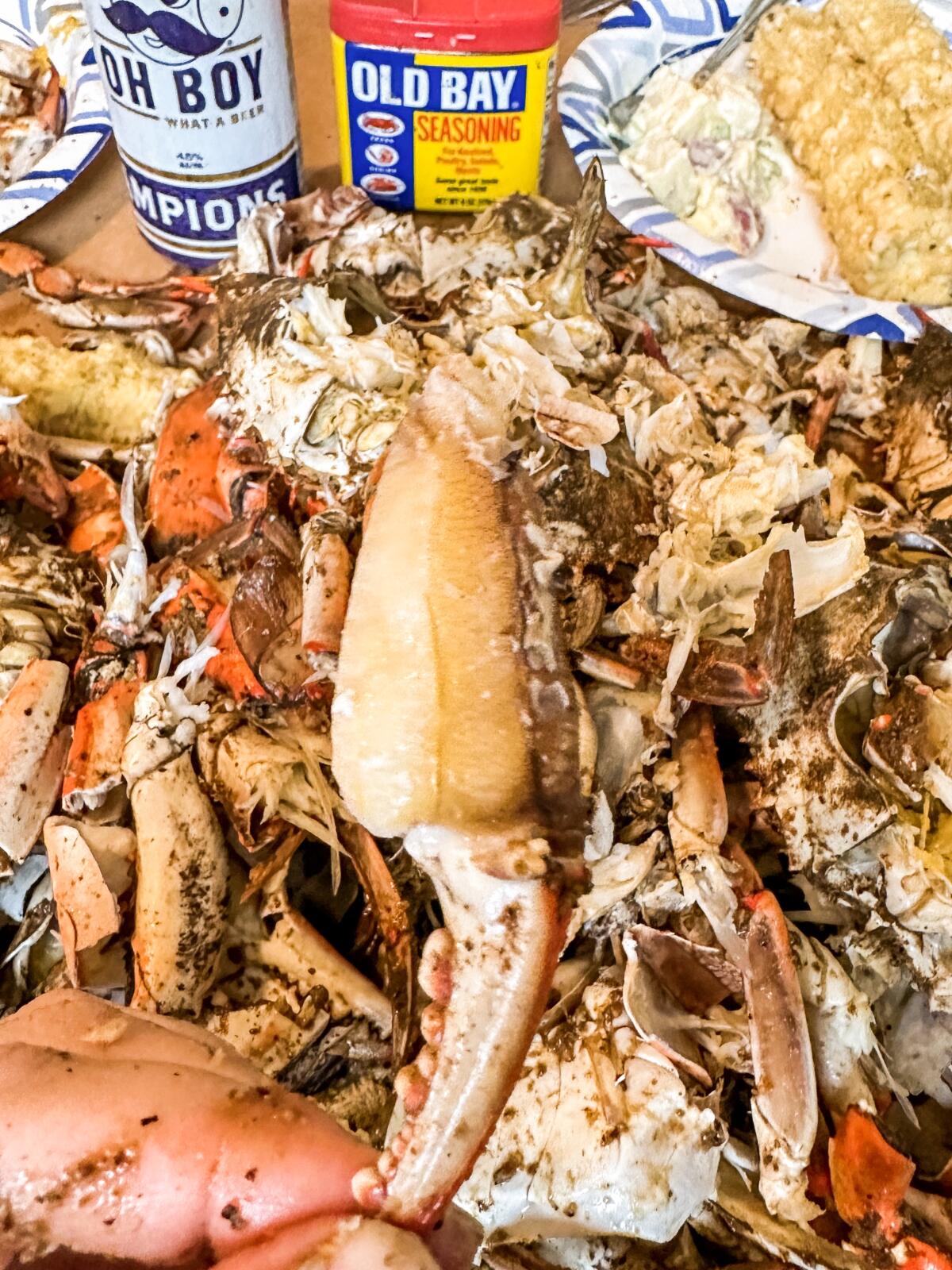
A Maryland crab feast in progress with Bill Addison and his family.
(Bill Addison / Los Angeles Times)
With that, my internal clock reset for next year’s return home for a crab feast.
Back in Los Angeles, at one of our best restaurants …
It never dawned on me that October might be the perfect month for crab globally until a meal three weeks after my Maryland trip — this week, in other words, on Halloween at Hayato.
If you’ve glanced at a ranked 101 list in the last six years, you’ve seen Hayato in various slots of the top 10 restaurants, including No. 1. Brandon Hayato Go started working at his father’s sushi restaurant in Seal Beach as a teenager. He apprenticed in Tokyo restaurants before opening his own tiny place in Row DTLA where he broadly follows kaiseki, emphasizing micro-seasons of seafoods and vegetables through varied cooking techniques served in ceremonial order.
He is a remarkable chef, though there are good reasons Go isn’t more of a household name. He serves seven people five night a week, so only a handful of customers (including devoted regulars) have the opportunity to know his cooking. Reservations are likely a months-long endeavor. Also, the cost is a whopping $400 per person, and that’s before the exquisite selection of sake. I have said it before: If I wasn’t a restaurant critic and could only save up for one blowout meal in Los Angeles a year, and could snag the booking, this is where I’d choose.
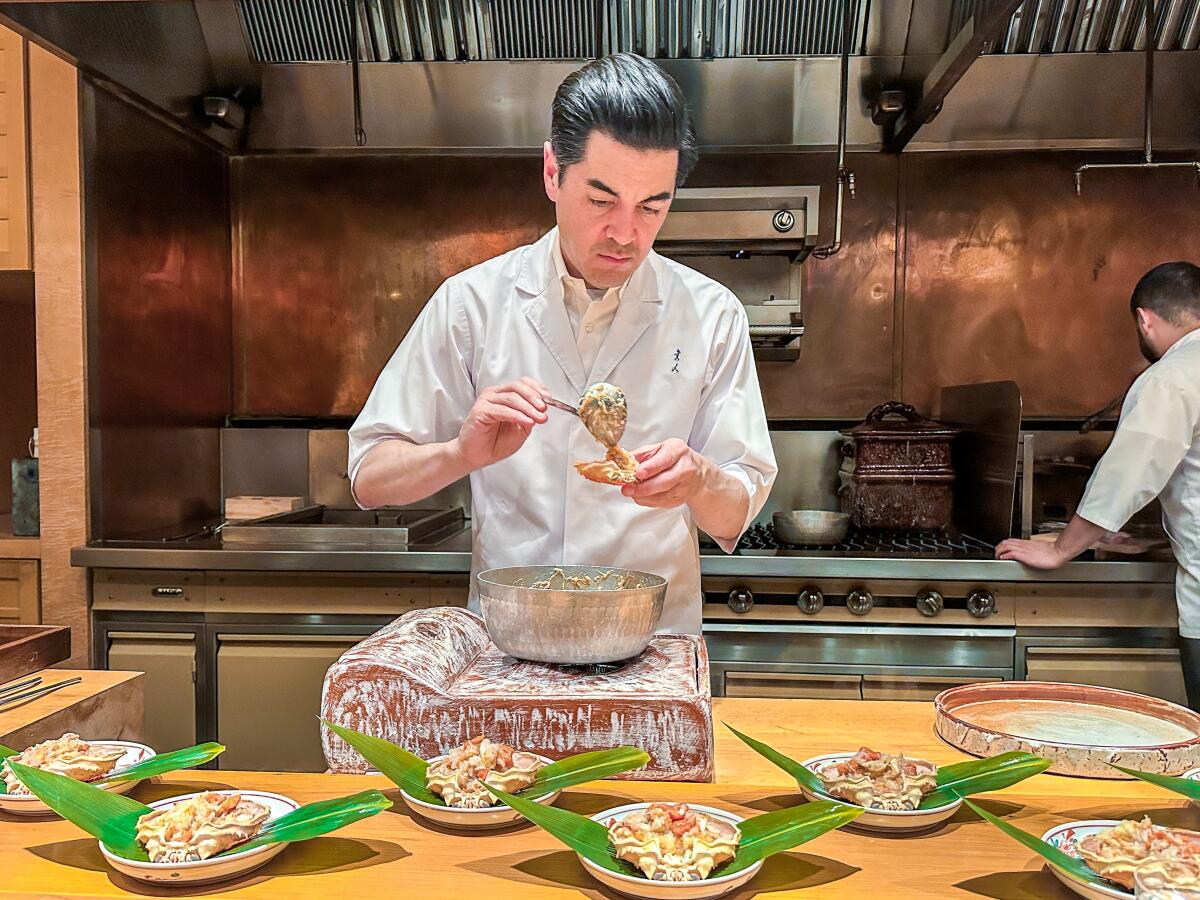
Brandon Go prepares a rice porridge, featuring snow crabs from Hokkaido, Japan, at his restaurant Hayato.
(Bill Addison / Los Angeles Times)
Dinner on Thursday began with ebi shinjo (delicate shrimp cakes) overlaid with fragrant, Oregon-grown matsutakes cut to resemble somen (thin wheat noodles). Go paired anago and chestnuts in a tempura duet; served rich kinki (channel rockfish) with smoky, caramelized onions roasted over binchotan; seared cuttlefish over flames for seconds and arranged them with fresh, peeled gingko nuts; and carved slices of electrically ripe muskmelon for dessert.
But I left feeling most euphoric over the two crab dishes.
The Japanese woman sitting next to me clapped in surprise when Go brought out the ingredients for a rice porridge course made with sekogani — small female snow crabs full of roe.
“This is one of my favorite ingredients all year,” Go said. “It’s a very short season and sometimes it come later but they had some available from Hokkaido so I ordered them. Most of the time you boil the crab, mix the roe and meat and serve it as a cold appetizer. But I think it’s good hot, the aroma is really special.”
He quickly mixed all the prepared elements in a pot on a portable burner on the counter and served each portion in a crab shell. If you’ve ever had Lowcountry-style she-crab soup shot through with orange roe you’ll have an idea of the concentrated flavor. The only seasoning in Go’s porridge was salt and kombu; the minerality pushed forward the sweetness of the crab and rice.
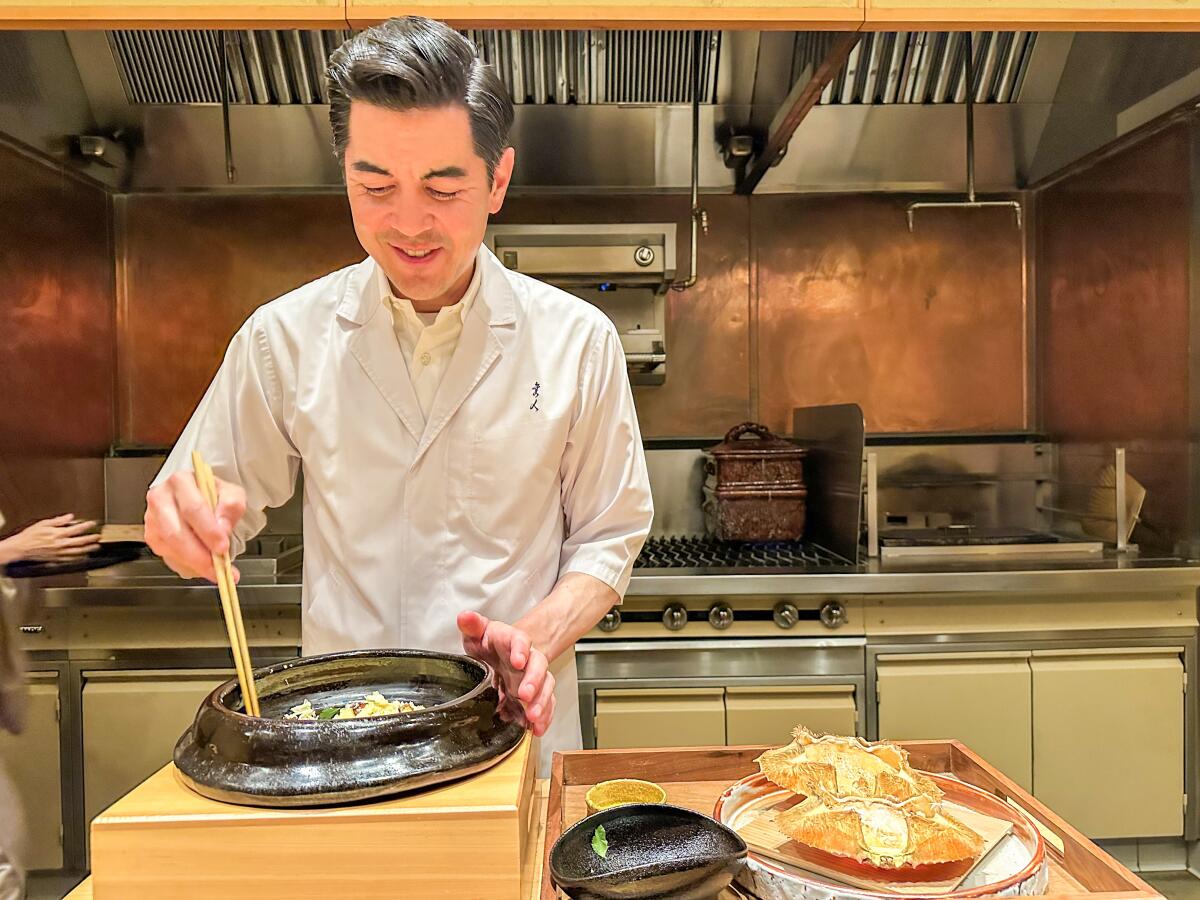
Brandon Go prepares a final course of rice and Dungeness crab at his Arts District restaurant Hayato.
(Bill Addison / Los Angeles Times)
Rice is also the traditional final course of a kaiseki progression. Often Go matches the rice with a seasonal fish, but this night it was Dungeness crab from Washington state. (Dungeness season customarily starts around now in Northern California but is often delayed for environmental reasons, including to protect endangered whales from being ensnared in crabbing nets, as is currently the case.)
Some lacy bits of Dungeness all but melted into the rice. A few chunkier pieces could be relished a moment longer. “This is the all-you-can-eat portion of the meal,” Go joked. I had seconds.
Before we left the restaurant, I grew curious about other crab species around the world. I googled and realized that Alaska king crab season begins in October, as does hairy crab season in Shanghai. This is a very niche obsession, I’m aware — but isn’t a joy of loving food to disappear into the things that make you happiest? In any case, maybe you’ll join me in lobbying for October as World Crab Month.
Newsletter
You’re reading Tasting Notes
Our L.A. Times restaurant experts share insights and off-the-cuff takes on where they’re eating right now.
You may occasionally receive promotional content from the Los Angeles Times.
Also …
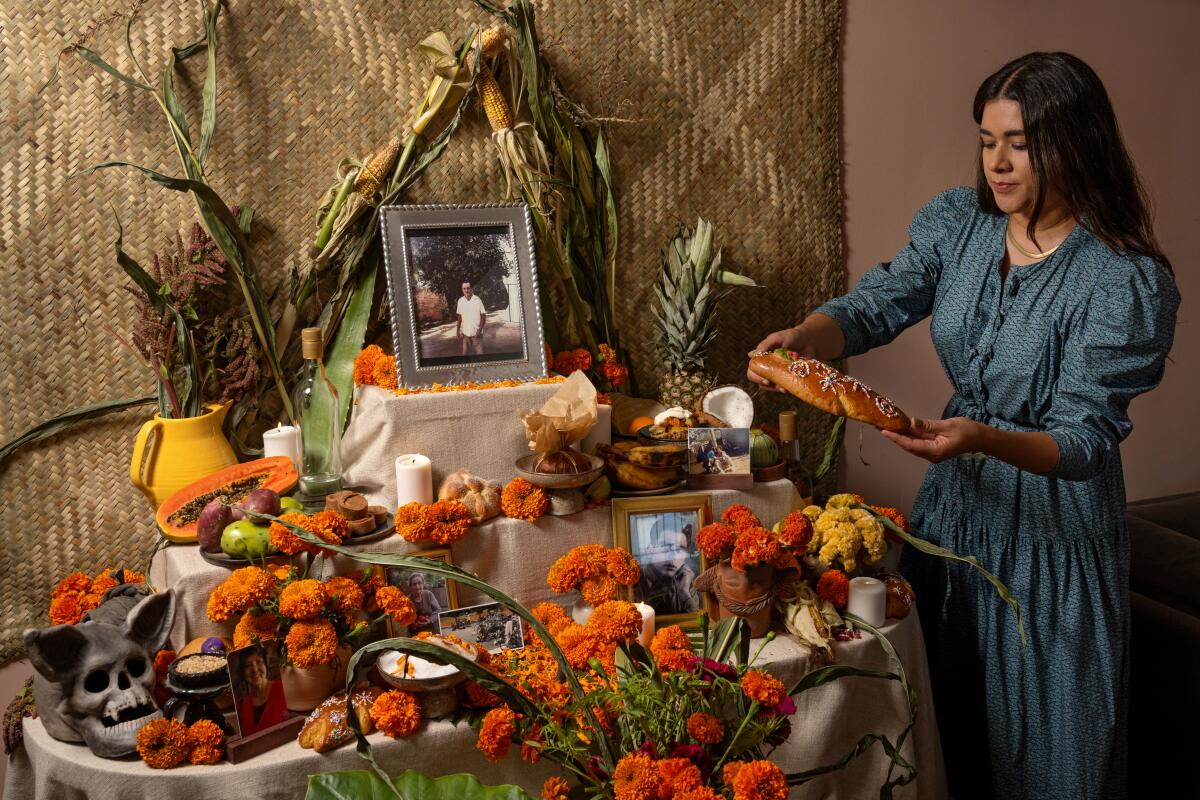
Paola Briseno Gonzalez carefully arranges the ofrenda in her home, honoring loved ones for Día de Muertos with vibrant marigolds, candles, and cherished mementos.
- Food editor Daniel Hernandez makes the case for why Día de Muertos is one of his favorite times in the culinary calendar.
- It’s on all our minds, so Daniel Dorsey names 16 places in L.A. where voters can stress eat, drink and get freebies on election day.
- Stephanie Breijo reports on the Egyptian influences through which Michael Mina traces his roots at his new oceanside restaurant Orla.
- Check out the roundup of this month’s highlighted places to eat, according to the Food staff.
- And last but very much not least: It’s a month before the Dec. 3 reveal party for our annual 101 Best Restaurants in L.A. guide, a sneak peek to a few of the restaurants that will be serving at the party has been released. They include Azizam, Providence, Rustic Canyon, Osteria Mozza, Dunsmoor, Dulan’s on Crenshaw, Petit Trois, Here’s Looking at You and Pizzeria Sei among many more. Check this link for tickets and more information.
Newsletter
Eat your way across L.A.
Like what you’re reading? Sign up to get it in your inbox every week.
You may occasionally receive promotional content from the Los Angeles Times.
